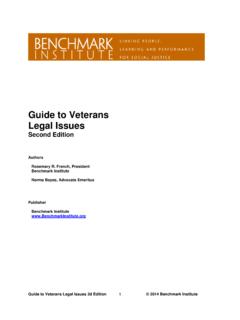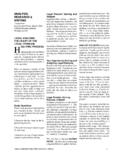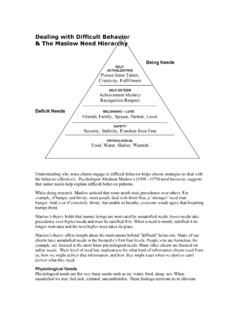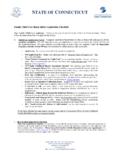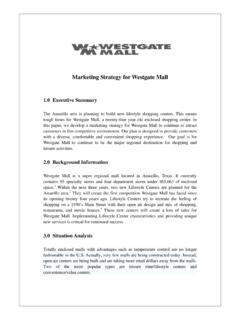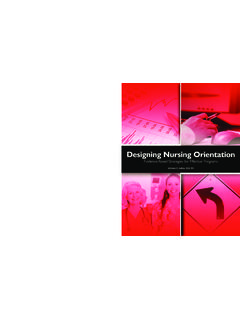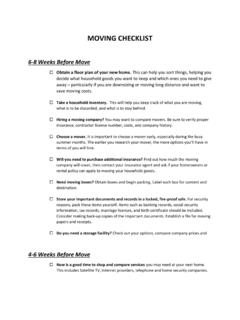Transcription of Writing Tasks: Convey Good News and Bad News
1 Writing tasks : Convey good news and Bad news Organizational Strategies for Business Letters This lesson will show you how to be sensitive to your reader's needs by using a little psychology. While everyone enjoys getting good news , no one wants to deliver bad news . However, you may have to do a considerable amount of both in your professional career. The trick, as with any other type of Writing , is to carefully consider what the reader needs to know. No matter what your Writing purpose is, you want your audience to understand and accept the information you're conveying. You'll want to put your audience in a good frame of mind to make them receptive to your information, especially if the news is bad. Letter Writing is a visual medium, and the placement of information has a bearing on how the reader will view both the information and its writer.
2 Therefore, business writers use organizational strategies to make their Writing sensitive and meaningful. The following table gives an overview of the strategies we will present in the next three lessons: Audience Reaction Organizational Plan Opening Body Close Eager or interested Requests Begin with request of main idea. Provide details. Close cordially, stating action to be performed. Pleased or neutral Informative or good news Begin with the main idea or good news . Provide details. Close with a cordial comment, a reference to the good news , or a look toward the future. Displeased Bad news messages; rejection letters Begin with a positive but relevant statement that allows for a transition into the bad news . Give reasons for the negative answer. Give the bad news in a positive light.
3 Close of unwilling Persuasive (collection, sales letters) Begin with a statement or question that captures attention. Arouse the audience's interest in the subject. Build the audience's desire to comply. Request action. The organizational strategy for information that interests or pleases the reader is fairly simple; just state the good news up front and develop reasons in the body of the letter. For situations in which the reader may be indifferent or even hostile toward the message, more effort is made to secure goodwill. The "Yes" or good news Letter The good news letter is usually the easiest to write. It provides positive news , such as awarded contracts and grants, job offers, information, and other requests. In a good news letter, you want to relate the news with high emphasis, which means as soon as you possibly can.
4 In such a letter, you should: Open politely and positively Move directly to your main point and make it Outline the terms (if applicable) Reiterate your main point Close politely and positively Example: "I am delighted to inform you that we have accepted your proposal for a grant from the Foundation. The Foundation is always eager to support much-needed charities such as yours. Enclosed you will find a sheet detailing the terms of your grant, including the total amount, accounting procedures, and how we will assess your progress. Please photocopy the sheet, then sign, date, and return it by the end of June. Congratulations on being chosen for the grant. We look forward to working with you in the near future." Congratulatory Letters Another type of " good news " letter is the note of congratulation.
5 Such letters are often used to build or maintain business relationships. For example, a home improvement company might send a congratulatory letter to a new homeowner, or a manager might send a congratulatory note to an employee who's gone above and beyond the call of duty. For example: Thanks for your hard work in developing the database of our sales and marketing efforts. You understood the goals of the project and our department from the very beginning, and it shows. I especially liked the supporting documentation you prepared for the final product; it was relevant, thorough, and makes the project that much more useful. You've ensured a useful, stable product that will be a solid foundation for years to come. Your talents in conceiving, developing, and delivering this project have been a great asset to our division and company.
6 A letter such as this would not only encourage and reward an employee, it could be used by that employee in support of requests for promotions and pay raises. A congratulatory note sent to a potential customer can help keep the company's name fresh in the customer's mind. Never underestimate the power of congratulatory letters. The "No" or Bad news Letter Constructing the bad news letter is a bit trickier. While you want to Convey the information as quickly as possible, you also want to be sensitive to the needs of your readers. The way you present negative information can have a substantial impact on how the reader views the information and your role in presenting it. Consider the following examples: Sample 1 Dear Mr. Freemont: Your position will be phased out over the next six months.
7 Company needs change and people have to change with them. We will see whether something is available for you by that time. I want to encourage you and let you know that we value your work and presence in the company. Sample 2 Hello Jim, I want to encourage you and let you know that we value your work and presence in the company. Company needs change and people have to change with them. Your position will be phased out over the next six months. We will see whether something is available for you by that time. Sample 3 Hello Jim, I want to encourage you and let you know that we value your work and presence in the company. We will always find a place for you in the company if anything is available. However, company needs change and people have to change with them. Your position will be phased out over the next six months.
8 But we will find a place for you if anything is available. All three letters present the same information, yet differ substantially in how they present it. You undoubtedly would prefer the third. The second is better than the first, which is just lousy. Notice that the only difference between the first and second is the order of sentences. The third only changes the way the content is worded; the idea is the same. The main idea here is that, unlike in good news letters, you want to embed the negative information in secondary positions: in the center of paragraphs, letters, and, if possible, sentences. In the first example, the reader is told upfront that his position is being phased out, which may lead him to conclude that his efforts are not good enough. But the third (and to a lesser extent, the second) letter praises the employee before breaking the news .
9 Placing positive information in front of negative information is called a buffer. Including a buffer is a sign that you're giving the reader all the respect and consideration he or she deserves. Also note that the third letter is less abrupt than the others: it assures the reader that everything is being done to secure his future with the company and that he's getting the attention he deserves. Your goals in Writing a bad news letter should be threefold: Convey your message so that your audience understands a firm decision has been made. Help your audience understand that your decision was fair and just, and that all information was duly considered. Allow your audience to remain well disposed toward your business, division, and hopefully, you. Follow these guidelines when Writing the bad news letter: Open politely and professionally, always with an eye toward the reader's hopes and feelings.
10 Outline the details of the issue. State the decision or news . Explain the reasons behind the decision and why it's important to the reader. Close politely and professionally. The bad news should be placed in the middle of the letter, after the buffer. It should also be de-emphasized visually and grammatically. You can do this by: Minimizing the space and time devoted to it. Subordinating it in a complex or compound sentence ("We always enjoy discussing opportunities with qualified candidates, and while we would like to hire everyone we talk to, circumstances prohibit us from doing so.") Embed it in the middle of the paragraph. A tactfully written rejection letter might be written like this: Since our systems analyst positions are exceptionally demanding, our human relations department has researched the qualifications needed to succeed in them.
